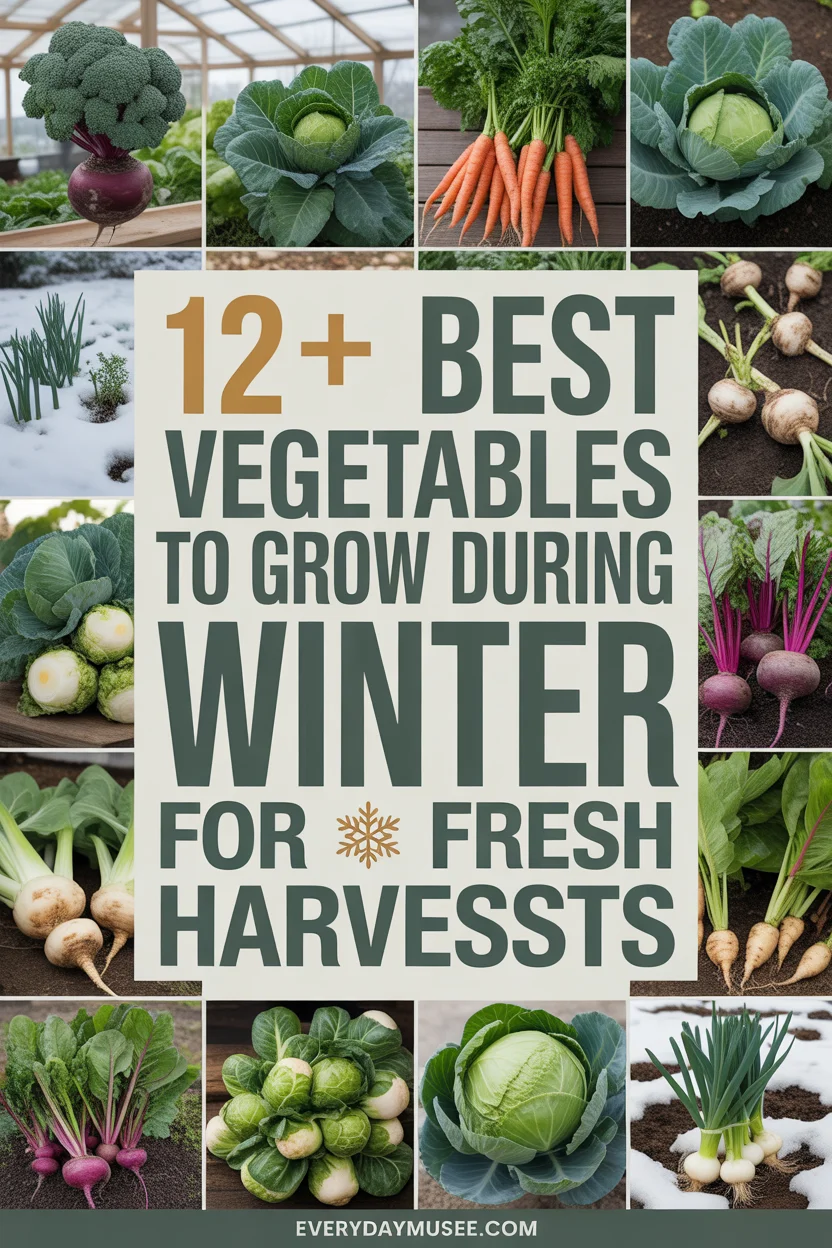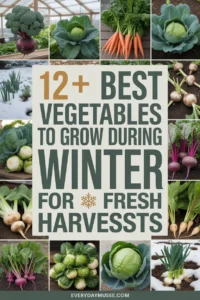Introduction: Why Try Winter Gardening?
Just because it’s cold outside doesn’t mean your garden has to sleep! Winter gardening is a great way to enjoy fresh, homegrown vegetables all year long—even in chilly weather. When many people stop gardening after fall, you can keep growing with the right plants. Winter vegetables are not only tough and tasty, but they also help you save money and eat healthy during the colder months.
Whether you have a backyard garden, a greenhouse, or just a few raised beds, you can grow cold-weather vegetables that thrive in frosty conditions. Plus, there are fewer bugs in winter, and less weeding to do. With a little planning and the right tools, you’ll be surprised at how easy—and fun—winter gardening can be!
Why Winter Gardening Works
You might be wondering: Can plants really grow in the cold? The answer is yes! Some vegetables are cold-hardy, which means they can survive (and even thrive) in chilly weather. These plants grow slower in winter, but they still produce tasty crops.
Here’s what makes winter gardening possible:
- Cold-hardy vegetables: Plants like kale, spinach, and carrots can handle frosty nights.
- Protection methods: Use mulch, cold frames, or a greenhouse to keep plants warm.
- Sunlight matters: Most winter veggies need 4–6 hours of sunlight daily.
- Choose the right soil: Well-drained, rich soil helps roots stay healthy in cold weather.
By preparing your garden and picking the right vegetables, you can enjoy fresh produce even when it’s snowing outside.
Vegetables to Grow During Winter
1. Kale
Kale is one of the toughest winter greens. It actually gets sweeter after a frost!
- How to grow: Plant in full sun or light shade. Water regularly, and use compost-rich soil.
- Temperature: Grows well in 20°F to 75°F.
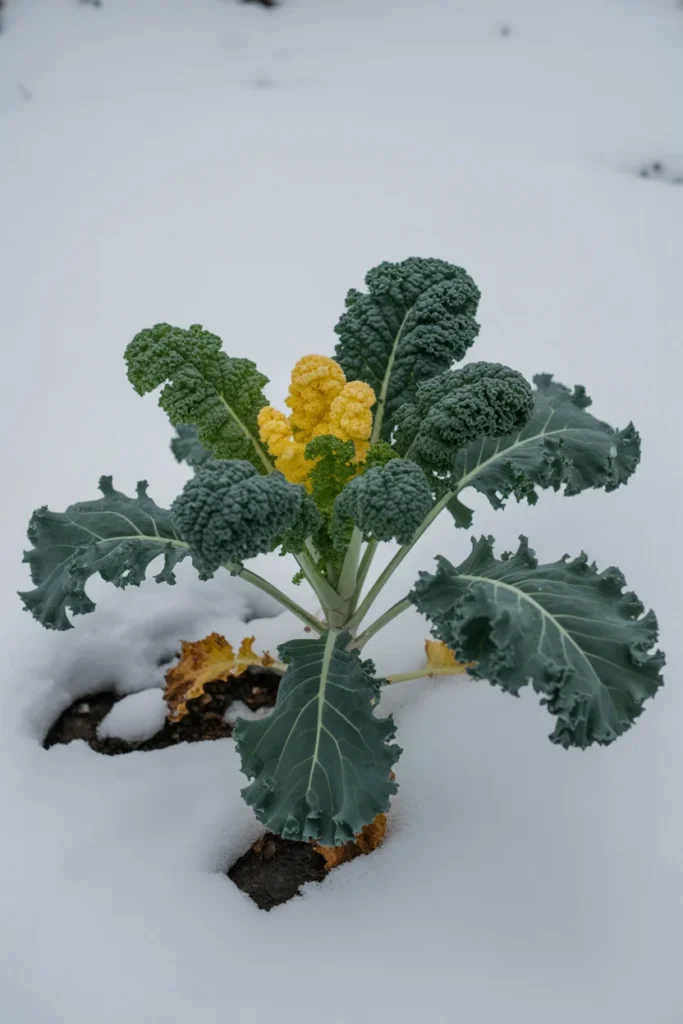
2. Spinach
Spinach is fast-growing and loves cool weather, making it a winter favorite.
- How to grow: Needs 6 hours of sunlight. Keep soil moist but not soggy.
- Temperature: Thrives in 25°F to 60°F.
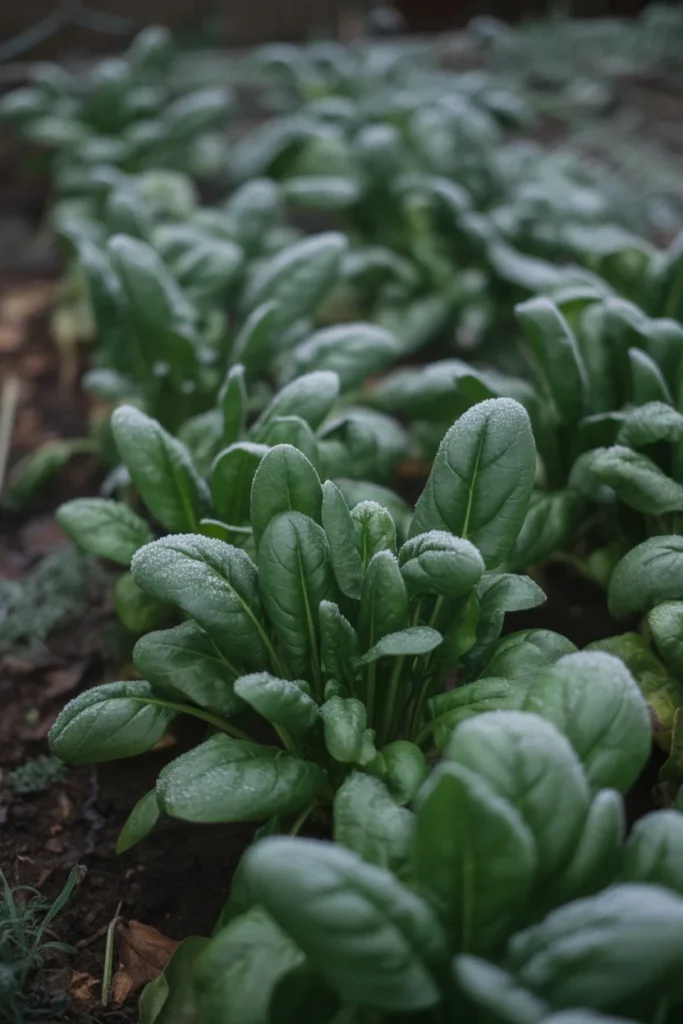
3. Carrots
Carrots become extra sweet in cold soil. You can even leave them in the ground through light snow.
- How to grow: Loose, sandy soil is best. Water deeply once a week.
- Temperature: Can handle 15°F to 75°F.
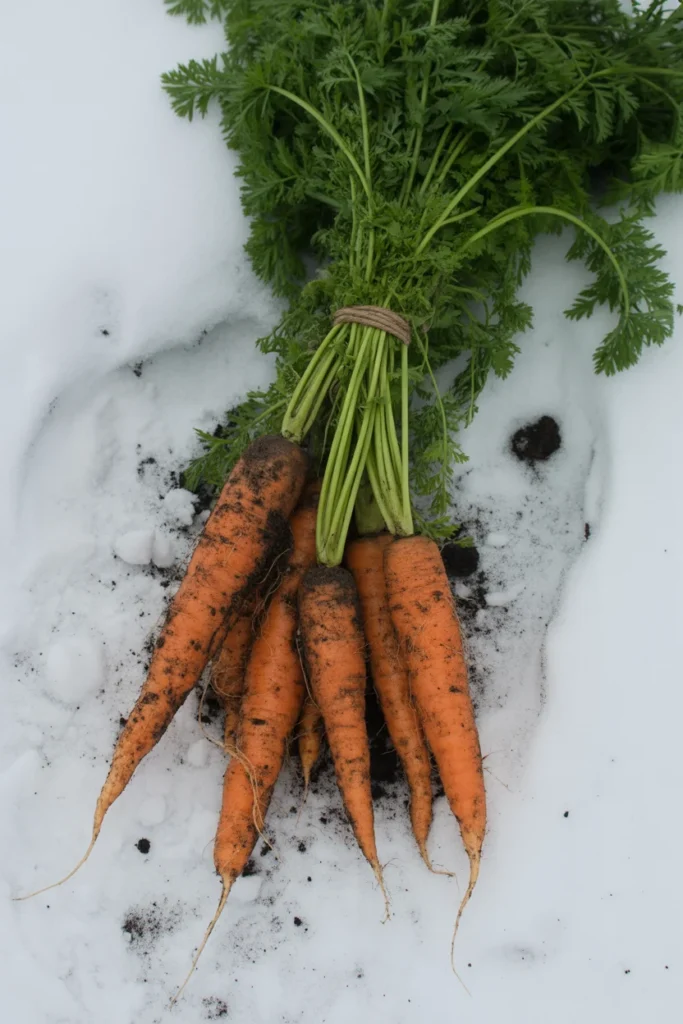
4. Cabbage
Cabbage can handle frosts and gets tastier in the cold.
- How to grow: Needs 6 hours of sun. Use firm soil and water weekly.
- Temperature: Best between 20°F to 75°F.
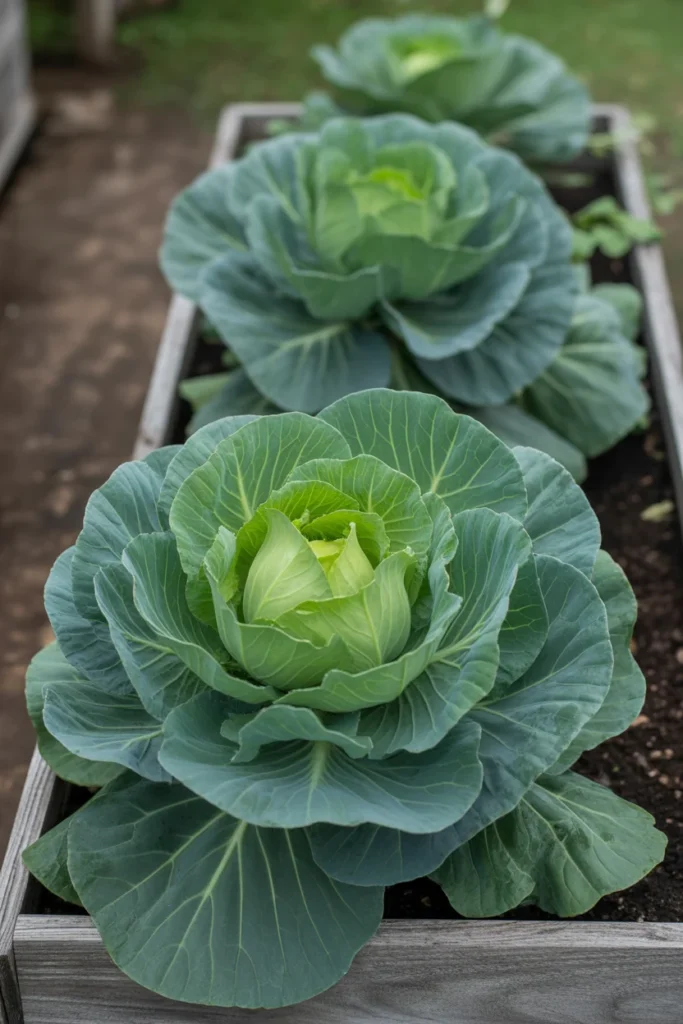
5. Broccoli
Broccoli is a cool-season crop that keeps producing in chilly temperatures.
- How to grow: Prefers full sun and rich soil. Water often.
- Temperature: Grows in 25°F to 75°F.
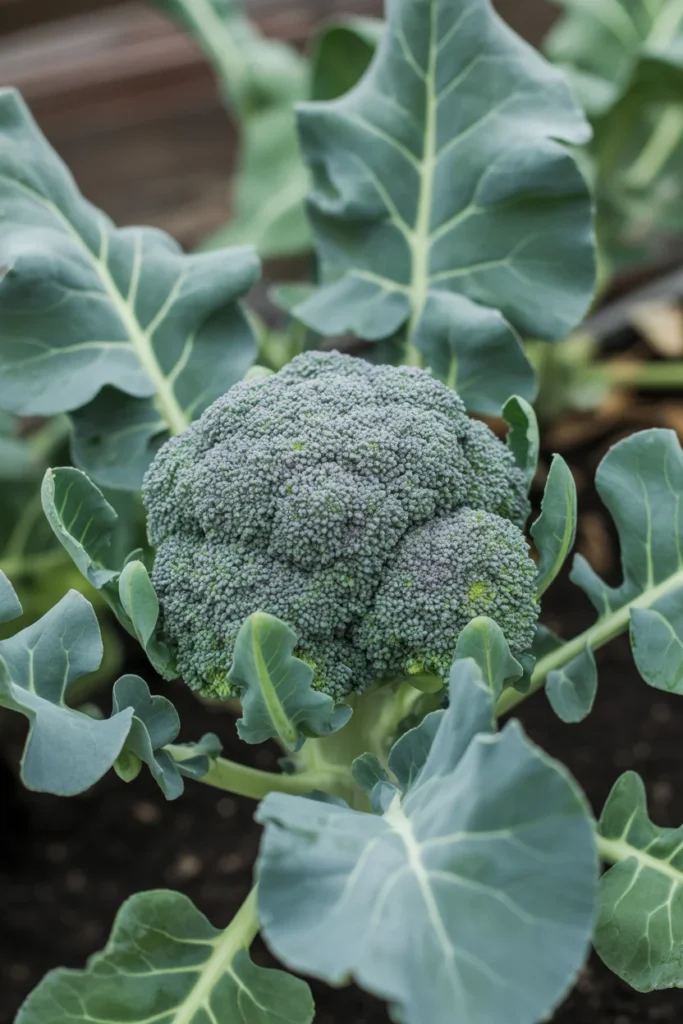
Brussels Sprouts
These mini-cabbages love the cold and taste better after a frost.
- How to grow: Needs full sun and steady moisture. Use compost for rich soil.
- Temperature: Tolerates 20°F to 70°F.
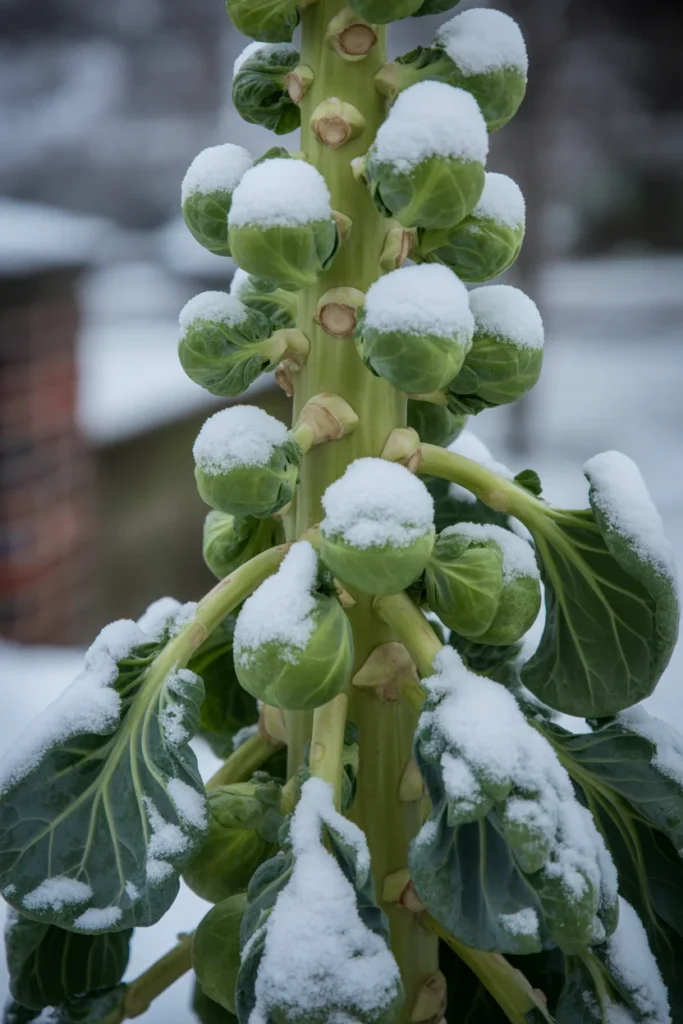
7. Garlic
Garlic is planted in late fall and grows slowly over winter for a summer harvest.
- How to grow: Plant cloves in loose soil. Needs some sun and regular moisture.
- Temperature: Can survive below 20°F when mulched.
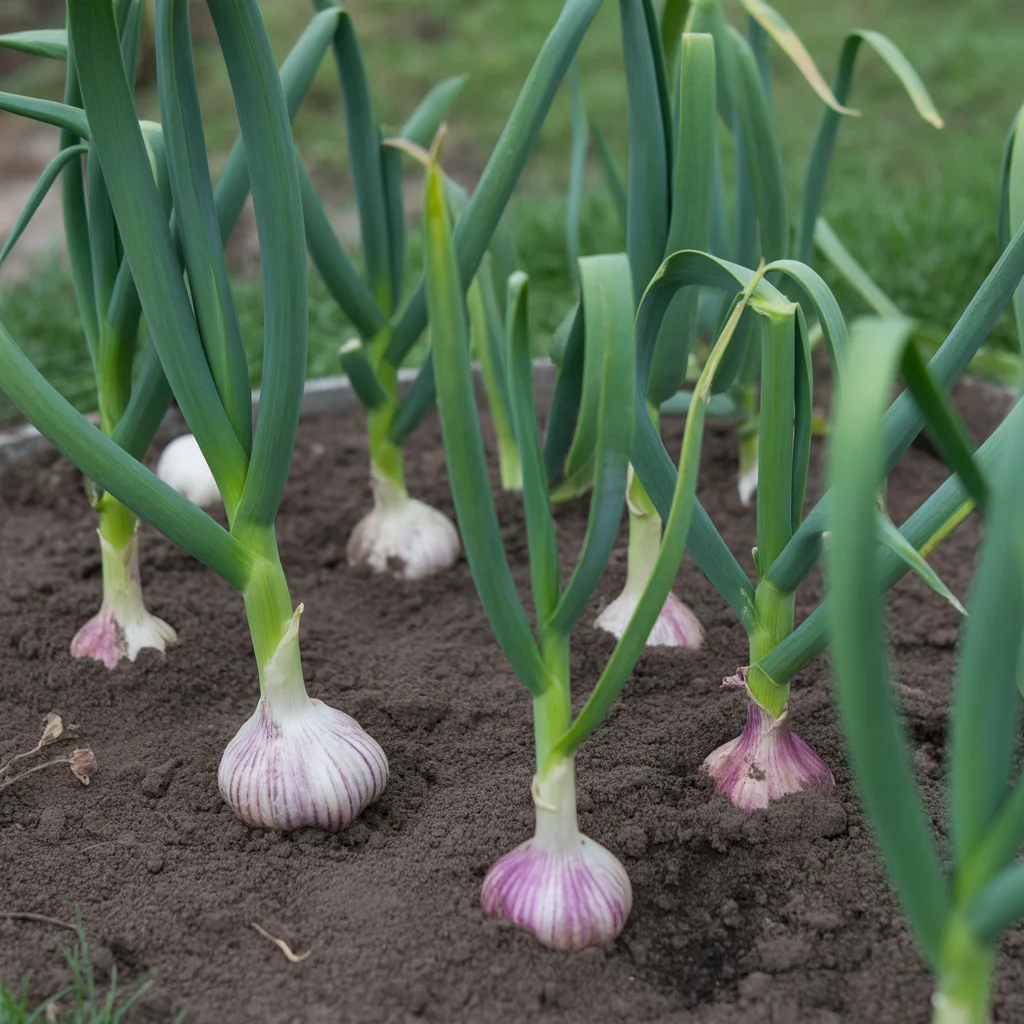
8. Onions
Onions grow slowly in cold weather and come in many types like scallions and leeks.
- How to grow: Full sun and well-drained soil. Keep soil lightly moist.
- Temperature: Ideal range is 20°F to 65°F.
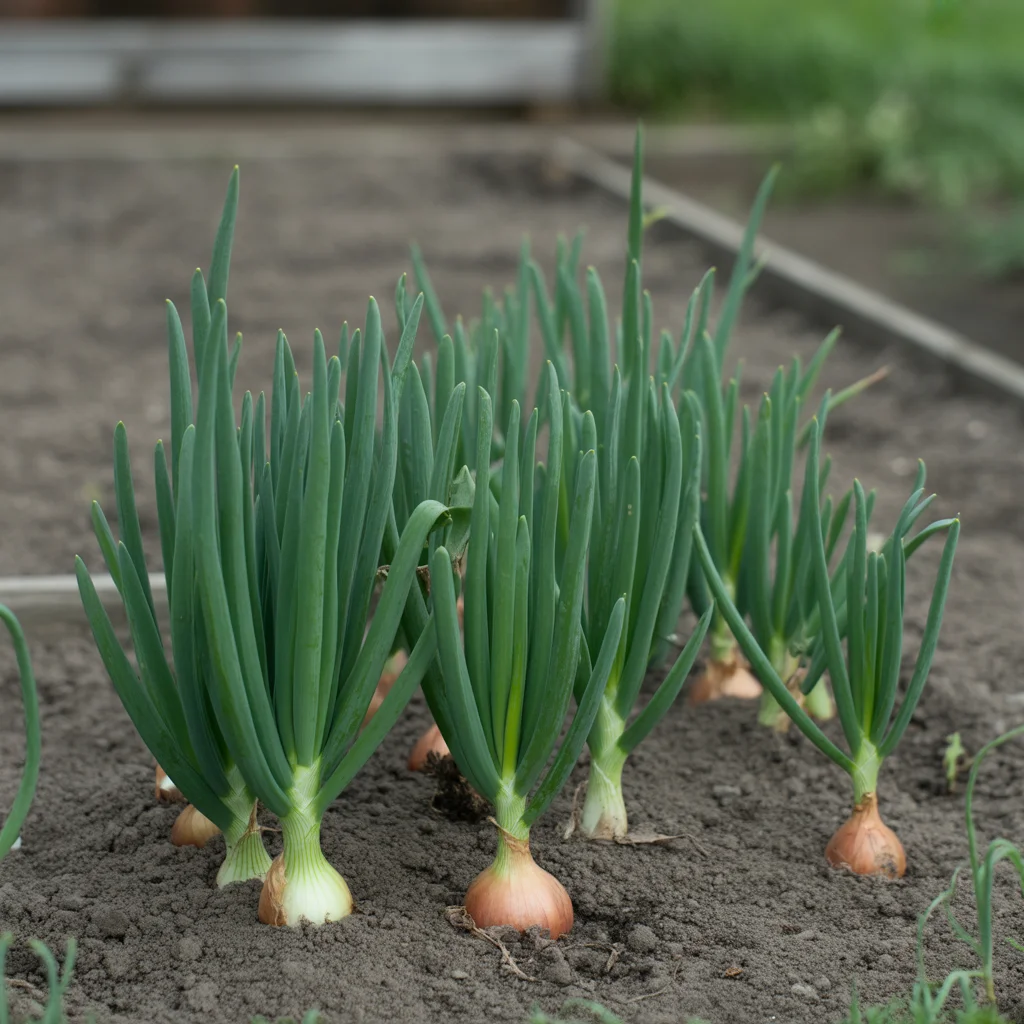
10. Beets
Beets grow both tasty roots and leafy greens, even in cold weather.
- How to grow: Needs loose, sandy soil and regular watering.
- Temperature: Tolerates 20°F to 70°F.
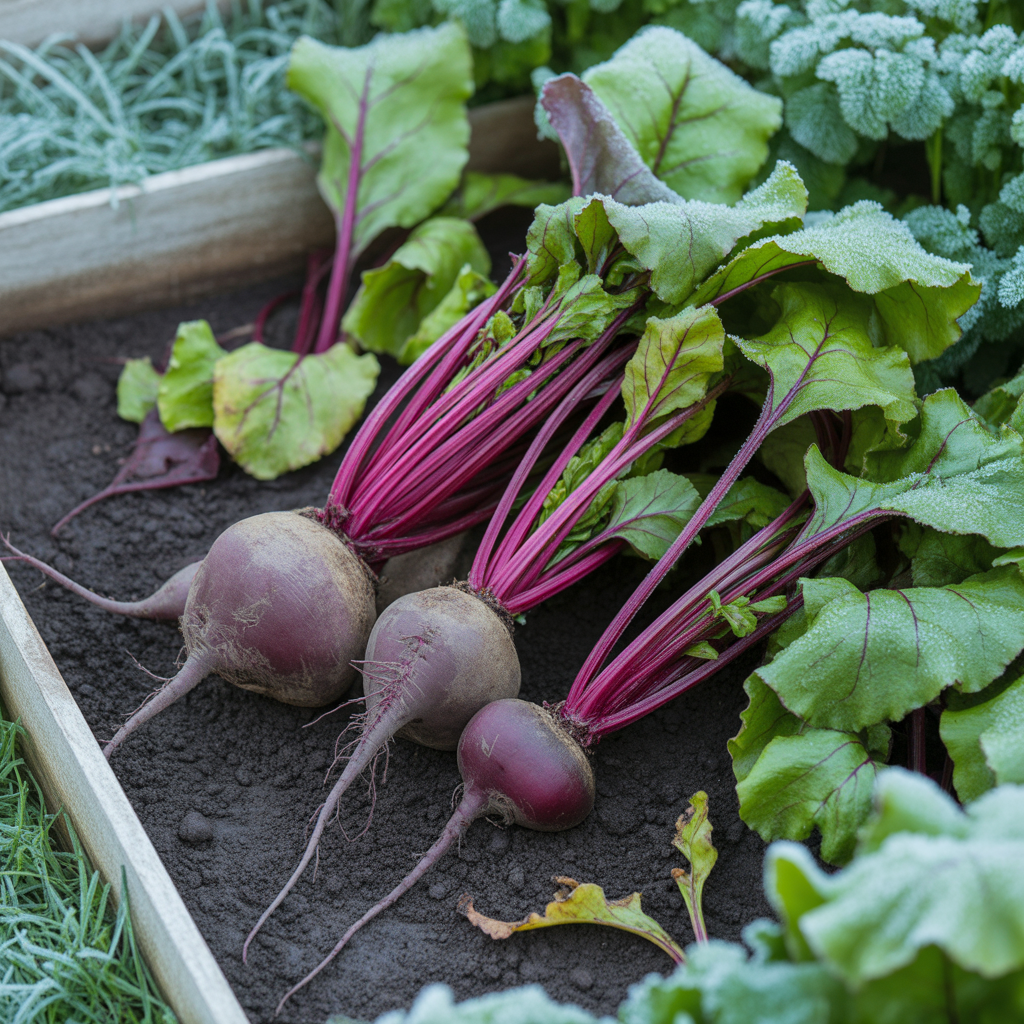
11. Swiss Chard
Swiss chard is colorful and hardy, perfect for cold months.
- How to grow: Needs 4–6 hours of sun. Water often and mulch to protect roots.
- Temperature: Survives 15°F to 75°F.
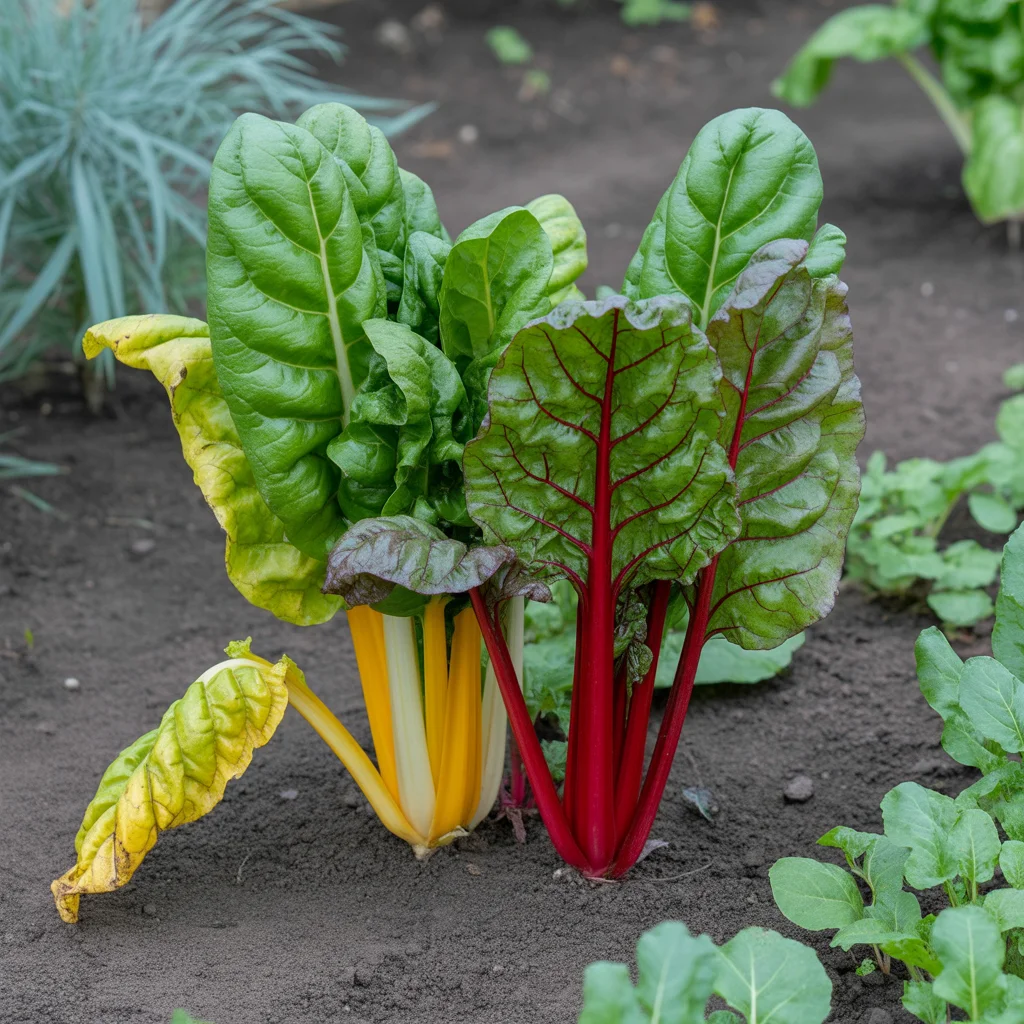
12. Mustard Greens
These spicy greens are fast-growing and cold-tolerant.
- How to grow: Likes full sun and well-drained soil. Keep soil moist.
- Temperature: Best between 25°F to 65°F.
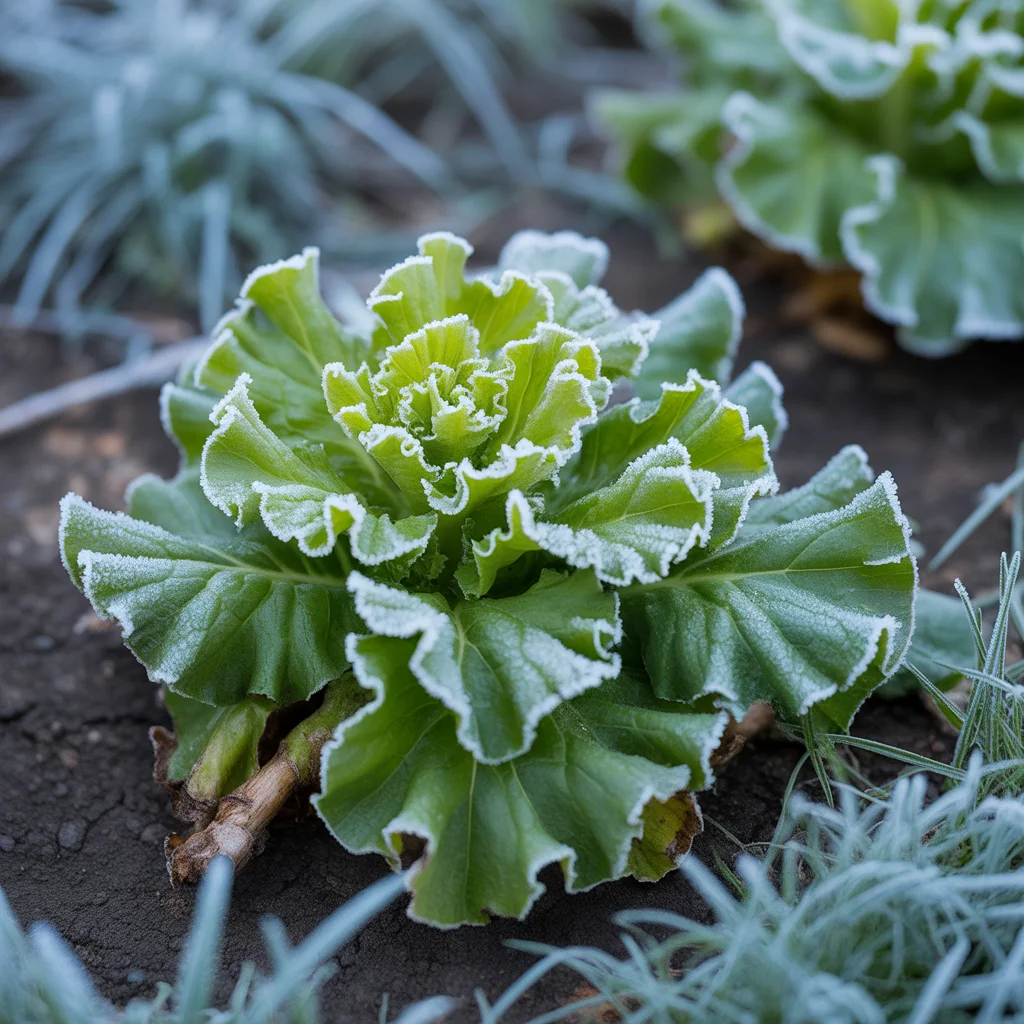
Comparison Table of Winter Vegetables
| Vegetable | Planting Time | Harvest Period | Temperature Tolerance |
| Kale | Early Fall | Late Fall–Winter | 20°F – 75°F |
| Spinach | Late Summer–Fall | Fall–Winter | 25°F – 60°F |
| Carrots | Late Summer–Fall | Fall–Winter | 15°F – 75°F |
| Cabbage | Mid–Late Summer | Fall–Winter | 20°F – 75°F |
| Broccoli | Late Summer | Late Fall–Winter | 25°F – 75°F |
| Brussels Sprouts | Mid Summer | Late Fall–Winter | 20°F – 70°F |
| Garlic | Late Fall | Summer (next year) | Below 20°F (with mulch) |
| Onions | Late Fall | Late Spring–Summer | 20°F – 65°F |
| Turnips | Early Fall | Fall–Winter | 15°F – 70°F |
| Beets | Late Summer–Fall | Fall–Winter | 20°F – 70°F |
| Swiss Chard | Late Summer–Fall | Fall–Winter | 15°F – 75°F |
| Mustard Greens | Early Fall | Fall–Winter | 25°F – 65°F |
FAQs About Winter Gardening
Can vegetables really grow in winter?
Yes! Many vegetables are cold-hardy and can survive frosty temperatures. With the right care and protection, your garden can keep producing even in the cold months.
What is the best vegetable to grow in cold weather?
Kale is one of the best. It’s very frost-tolerant, easy to grow, and actually gets sweeter in the cold.
How can I protect my garden from frost?
Use mulch, row covers, cold frames, or even mini greenhouses. These tools trap heat and shield plants from freezing temperatures.
What tools do I need for winter gardening?
Start with basics: gloves, trowel, watering can, compost, mulch, and protective covers like cold frames or frost blankets.
Can I grow winter vegetables in containers?
Absolutely! Use deep pots with good drainage and place them in sunny spots. Protect them with covers during frosty nights.
Conclusion: Give Winter Gardening a Try!
Winter gardening isn’t just possible—it’s rewarding! Whether you’re growing kale in the snow or digging up sweet carrots in the frost, it feels amazing to harvest fresh food in winter. Don’t worry if you’re new to gardening. Start small, pick a few easy winter crops, and learn as you grow.
So bundle up, grab your gloves, and plant something today. Your winter garden is waiting!

